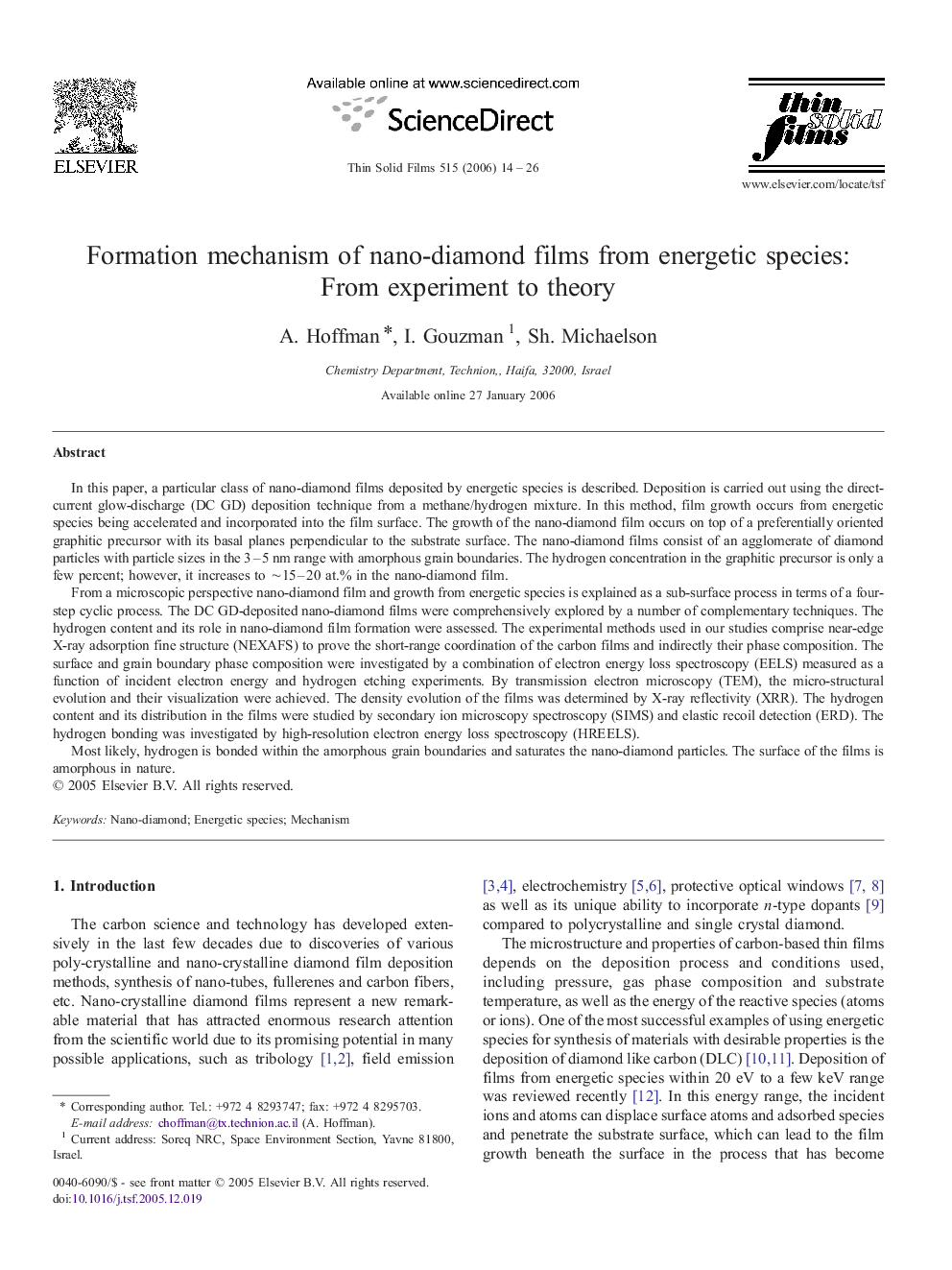| Article ID | Journal | Published Year | Pages | File Type |
|---|---|---|---|---|
| 1676697 | Thin Solid Films | 2006 | 13 Pages |
In this paper, a particular class of nano-diamond films deposited by energetic species is described. Deposition is carried out using the direct-current glow-discharge (DC GD) deposition technique from a methane/hydrogen mixture. In this method, film growth occurs from energetic species being accelerated and incorporated into the film surface. The growth of the nano-diamond film occurs on top of a preferentially oriented graphitic precursor with its basal planes perpendicular to the substrate surface. The nano-diamond films consist of an agglomerate of diamond particles with particle sizes in the 3–5 nm range with amorphous grain boundaries. The hydrogen concentration in the graphitic precursor is only a few percent; however, it increases to ∼15–20 at.% in the nano-diamond film.From a microscopic perspective nano-diamond film and growth from energetic species is explained as a sub-surface process in terms of a four-step cyclic process. The DC GD-deposited nano-diamond films were comprehensively explored by a number of complementary techniques. The hydrogen content and its role in nano-diamond film formation were assessed. The experimental methods used in our studies comprise near-edge X-ray adsorption fine structure (NEXAFS) to prove the short-range coordination of the carbon films and indirectly their phase composition. The surface and grain boundary phase composition were investigated by a combination of electron energy loss spectroscopy (EELS) measured as a function of incident electron energy and hydrogen etching experiments. By transmission electron microscopy (TEM), the micro-structural evolution and their visualization were achieved. The density evolution of the films was determined by X-ray reflectivity (XRR). The hydrogen content and its distribution in the films were studied by secondary ion microscopy spectroscopy (SIMS) and elastic recoil detection (ERD). The hydrogen bonding was investigated by high-resolution electron energy loss spectroscopy (HREELS).Most likely, hydrogen is bonded within the amorphous grain boundaries and saturates the nano-diamond particles. The surface of the films is amorphous in nature.
